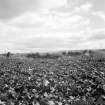Pricing Change
New pricing for orders of material from this site will come into place shortly. Charges for supply of digital images, digitisation on demand, prints and licensing will be altered.
Upcoming Maintenance
Please be advised that this website will undergo scheduled maintenance on the following dates:
Thursday, 9 January: 11:00 AM - 3:00 PM
Thursday, 23 January: 11:00 AM - 3:00 PM
Thursday, 30 January: 11:00 AM - 3:00 PM
During these times, some functionality such as image purchasing may be temporarily unavailable. We apologise for any inconvenience this may cause.
Cullernie
Ring Cairn (Neolithic) - (Bronze Age)
Site Name Cullernie
Classification Ring Cairn (Neolithic) - (Bronze Age)
Alternative Name(s) Cullearnie
Canmore ID 14229
Site Number NH74NW 4
NGR NH 7250 4769
Datum OSGB36 - NGR
Permalink http://canmore.org.uk/site/14229
- Council Highland
- Parish Inverness And Bona
- Former Region Highland
- Former District Inverness
- Former County Inverness-shire
NH74NW 4 7250 4769.
(NH 7250 4769) Stone Circle (NR) (Remains of)
OS 6"map, Inverness-shire, 2nd ed., (1907)
Cullearnie (Culloden Tile Works): (Ring Cairn)
This structure has been greatly disturbed and robbed. However, part of a typical peristalith remains, fairly complete on the north and NW sides. It is built of boulders of considerable size set close together and ranging from 2ft 3ins to 2ft 9ins in height. Only one stone seems to be in place on the south side and two on the SE. Various other stones have fallen forwards from their original positions. The cairn seems to have been oval in plan, about 34ft N-S by 40ft E - W. There are a great number of boulders lying about the site, some split by blasting, and it is not easy to distinguish the stones that are in situ and those which have been moved, perhaps for the foundation of a building which once stood here. A certain amount of turf-covered cairn material remains inside the kerb and round the base of the monolith.
A single stone 4ft 6ins high stands about 13ft outside the position of the kerb on the NE side, and another slab lies to the east of the cairn. These stones are probably survivors of the circle of monoliths. The standing stone has been joined to the kerb by a line of boulders, the foundation of a secondary wall.
Close to the site on the NE, Anderson (1831) records another cairn, thought not to have been opened. It was bounded by a kerb "15 paces" in diameter, and said to have been surrounded by a ditch, but apparently without a monolithic circle. No signs of this monument remain.
G Anderson 1831; ISSFC 1885; A S Henshall 1963.
The feature is as described by Henshall (1963) (in the original typescript). The cairn, oval in shape, measured 13.4m NE - SW by 11.2m NW-SE.
Visited by OS (EGC) 25 April 1962.
An air photograph, taken by Jill Harden in 1989, is in Inverness Museum (8901.33 INVMG).
Information from J Harden 1989.
Field Visit (16 August 1943)
Chambered Cairn, Stone Circle, Cullernie.
On a level field south of the Inverness-Nairn Rd opposite Cullernie is a stony mound about 2’ high bordered by close-set boulders on edge running more or less NE and SW. The boulders, almost continuous on NW but with serious gaps on the SE, form in the first instance a pear-shaped enclosure about 39’ x 33’. But about 32’ from the SW end a second setting, at first 25’ wide and slowly contracting, forms an extension bringing the total length of the mound up to 50’. On the north 5 stones survive of this outer line of which the easternmost is the largest in the monument, being 4’6” h x 4’6”w x 2’9” thick. Only three stones survive in the [S] line and one prostrate slab obviously displaced. On the margins of the mound between the uprights boulders appear thickly packed as in a cairn, but the interior is covered with rank grass in which numerous large blocks are lying without an obvious order. Some of these show jumper marks, showing that they are fragments more or less displaced. None are now suggestive of a chamber, nor is there any obvious passage though the authenticity of some stone protruding through the grass at the east end is not beyond question.
Visited by RCAHMS (VG Childe) 16 August 1943.
OS ref: iv. (‘Stone Circle, remains of’)
Field Visit (February 1978)
Cullernie 2 NH c.725 477 NH74NW 4
Nothing now remains of a 'circle', probably a prehistoric burial cairn, which stood 'hard by' the Clava cairn (NH74NW 4) in 1824; It was surrounded by a ditch.
RCAHMS 1979, visited February 1978
(Anderson, G 1831, 216; Henshall 196~ 72, i, 373)
Field Visit (April 1979)
Cullearnie (INV 23) NH 725 477 NH74NW 4
This Clava ring-cairn measures about 10.5m in diameter over a boulder kerb. Only two stones (one upright on the NE, and one fallen on the E) remain of a surrounding stone circle. RCAHMS 1979, visited April 1979
(Henshall 1963-72, i, 372-3)










































